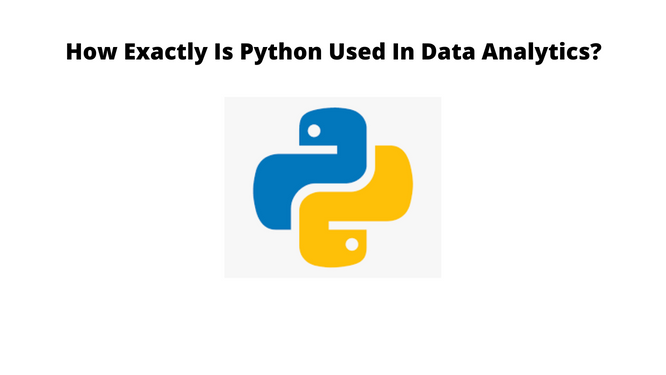How Exactly Is Python Used In Data Analytics?

Analyzing Data With Python What You Need To Know
Data is the lifeblood of any business, and understanding how to analyze it is key to success. Whether you’re a small business owner or a data analyst for a larger organization, learning how to use Python for data analysis is essential. Not only is Python powerful and versatile, but the libraries that are available for it make it easy to work with data in a variety of ways. In this section, we’ll take a look at some of the key libraries that are used for data analysis in Python.
First, let’s take a look at how python is used in data analytics. Python is an effective language for analyzing large amounts of data because it has both Power and Ease of Use. The power comes from its ability to handle complex tasks quickly and easily, while the ease of use makes it easy for non-technical people to work with data. Additionally, python has many built-in features that are useful in data analysis such as NumPy and Pandas. NumPy is an open source library that contains high-performance numeric functions. That can be used for various types of calculations, while Pandas is a library that provides easy access. To various types of DATA structures (such as arrays or lists) from within python code. You can become a pro in programming by joining the Python Training in Hyderabad course offered by Kelly Technologies
Machine Learning in Python:
Next, we’ll explore some popular libraries used for machine learning in Python. One such library is scikitLearn which provides various modules that allow you to train models using regression or classification methods. TensorFlow allows you to build custom machine learning models using multi-dimensional arrays (such as tensors), which makes it ideal for dealing with large amounts of complex data sets. Finally, we’ll discuss two popular visualization tools – Matplotlib and Seaborn – along with their respective uses in data analysis. Matplotlib allows you to create sophisticated graphs using basic python code. While Seaborn enables you to generate stunning visualizations from your datasets using Statistical Graphics techniques.
Lastly, we’ll explore some basic concepts related to predictive modeling withpython. This includes topics such as linear regression and random forest. Both of which are well suited for performing detailed predictions on datasets. Additionally, we’ll introduce tools like NLTK and spaCy which allow us not only to perform natural language processing. On text datasets but also to develop deep learning models.
Why Is Python Used In Data Analytics?
Data analytics is a critical part of any business, and Python is a powerful tool for data-driven decision making. Python can be used to develop statistical models, build predictive models and analyze large datasets. This makes it a great choice for data-driven decision making in areas such as marketing, product development, and customer service.
Python libraries such as NumPy and Pandas greatly simplify data analytics tasks such as filtering, sorting and merging. Additionally, Python has an extensive suite of visualization libraries for creating charts and graphs. This means that you can easily see the relationships between your data sets. In a way that is easy to understand. Additionally, Python allows for data gathering from multiple sources which can then be combined into a single set for analysis. This allows you to more accurately predict future outcomes based on your current data set.
Another great benefit of using Python is that it automates many common preprocessing tasks. Which would otherwise be time consuming or difficult to do manually. For example, Python can automatically detect missing values in your data set or clean it up. So that it’s ready for analysis. In addition, Python has versatile machine learning capabilities. It allow it to make more accurate predictions than other languages currently available on the market. We hope that this article in the Zag Zine must have been quite engaging and informative.



